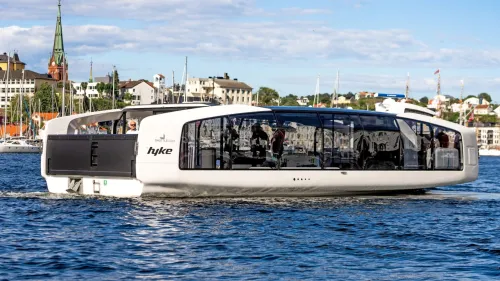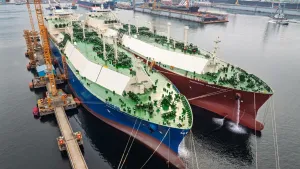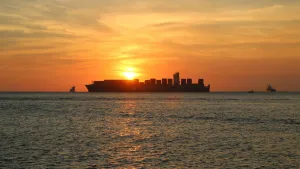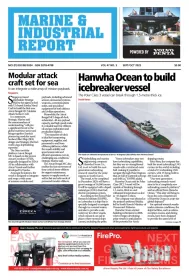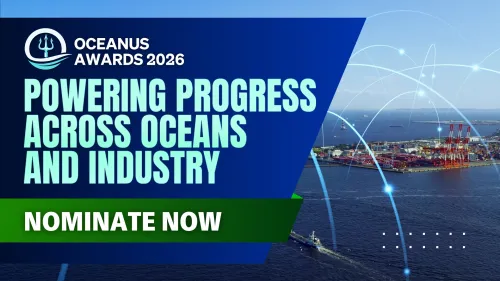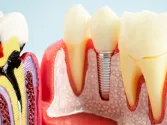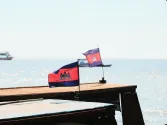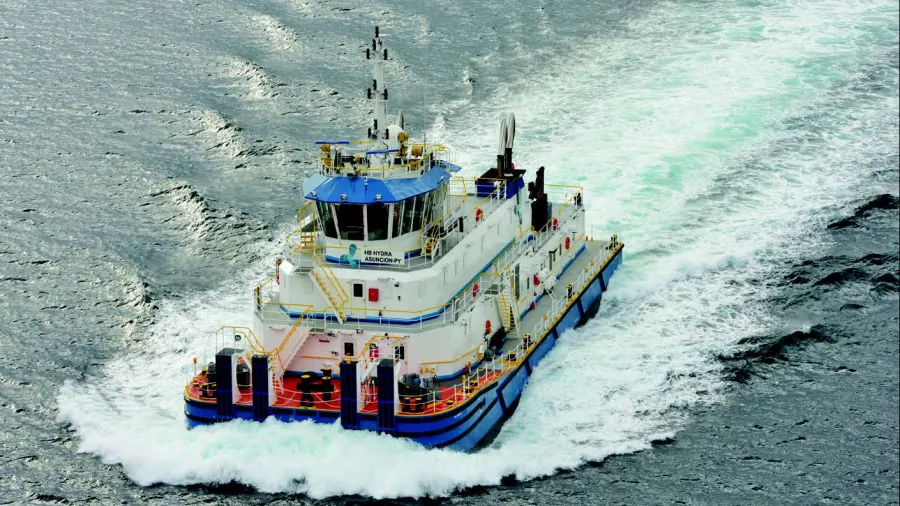
Unique Canadian Designs for Push Boats and Barges for the Rio Parana/Rio Paraguay Waterway
In the last two months of 2013, the first vessels for the Hidrovias do Brasil project began to take shape. This project will ultimately involve a large fleet of push boats and barges that will transport iron ore from Vale's Corumba mine in southwest Brazil, a distance of 2,500 km to tidewater near Buenos Aires. The Hidrovias contract calls for the construction and operation of eight powerful river push boats and 144 hopper barges. The barges will operate in 4x4 convoys, each with 16 barges, to transport the iron ore in lots of approximately 400,000 tonnes per shipment down the waterway. The operation will run 24 hours per day, 11 months per year, with minimal downtime.
The fleet of highly specialized push boats and barges have been designed by Robert Allan Ltd. of Vancouver, Canada, leveraging the company’s extensive experience in designing extreme shallow draft vessels for the Canadian northland. The barges, each measuring 61 m x 15 m x 4.27 m, are conventional Mississippi-style hopper barges, designed to maximize convoy dimensions, and must carry a required 2500 tons deadweight with limited draft due to restricted under keel clearance. A combination of "box"-shaped barges for mid-convoy and rake-ended barges for the ends was used, and a rigorous design process was needed to minimize the steel weight without sacrificing strength.
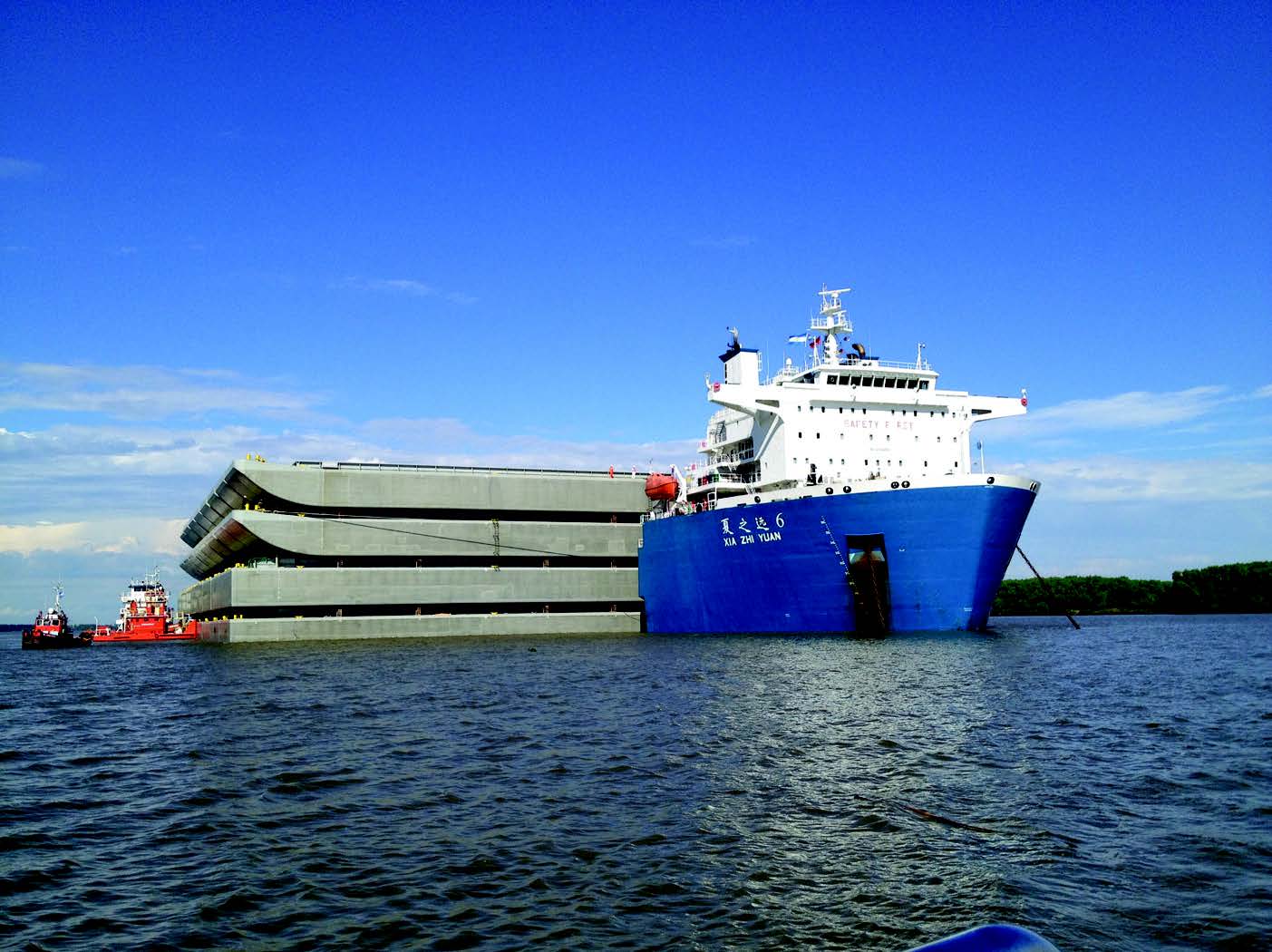
Finding a shipyard with the capacity to build and deliver 128 barges within the required timeframe was challenging. However, investigations led to ZPMC in China, which offered the necessary facilities. Notably, ZPMC’s semi-submersible ocean transporter fleet was used to deliver the barges. The first shipment of 32 barges arrived near Buenos Aires, ready for offloading. Robert Allan Ltd. provided construction oversight for the barge fleet on behalf of the owners.
The last batch of barges will also deliver a 54 m x 25.2 m 1,600 MT floating dry dock, also built at ZPMC and designed by Robert Allan Ltd., for use by Hidrovias do Brasil in servicing their new fleet of push boats and barges. An additional 16 barges are currently under local fabrication at CIE S.A. in Asunción, Paraguay.
The push boats, designated as the RApide 4500 Class, are limited to a 2.1 m draft in the dry season and 2.4 m in the wet season. The construction contract for the eight push boats was awarded to Uzmar of Turkey, and the first two vessels of the class are currently completing owner acceptance trials. The biggest challenge in designing these vessels was the need to stop the entire convoy in less than 2.5 flotilla lengths when operating fully laden and at full speed downstream. Extensive analysis and testing were performed to ensure this capability, as well as developing a suitable hull form to meet the pushing, braking, and maneuvering requirements, while also achieving the fuel capacity, draft restrictions, and endurance required for the entire operation. Hull form optimization studies and fuel consumption analyses were performed, and Robert Allan Ltd. worked closely with major equipment vendors to ensure the optimum propulsion system. CFD analysis was conducted to verify the fuel consumption model, optimize hull form and efficiency, and verify the crash stop requirements. Further scale model testing at the Vienna Model Basin was done to verify the results of the CFD analysis.
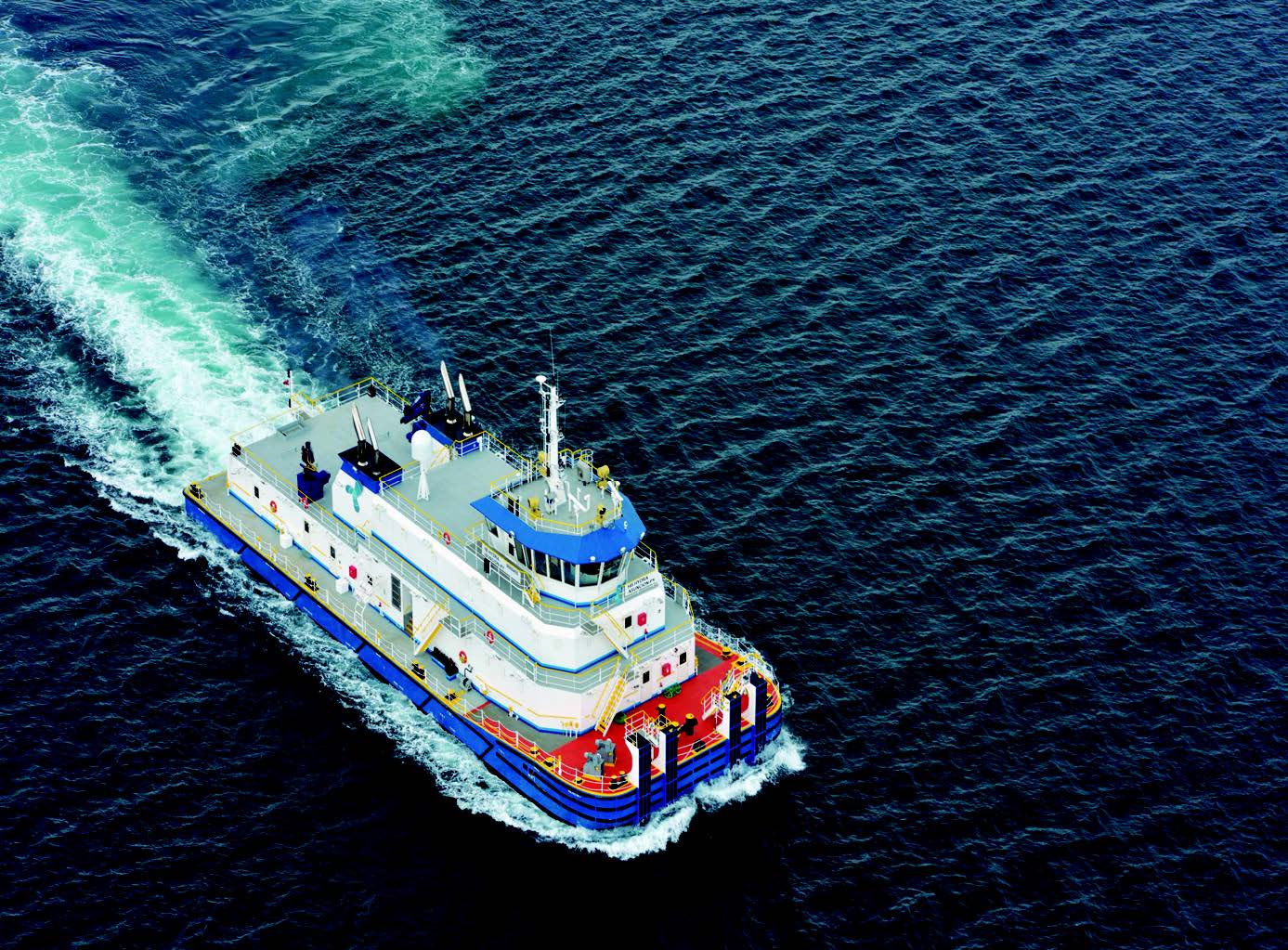
These high-performance push boats, measuring 46.5 m x 16.5 m x 4 m, are propelled by a state-of-the-art diesel-electric propulsion system. Three main diesel generator sets provide 3 x 1,710 ekW of power to 3 x 1,600 kW motors, each driving a Schottel SRP 1215 Z-drive with a nozzle modified for shallow draft operation. The major electric components (AFE drives, propulsion motors, generators, etc.) are ABB components, supplied by Elkon, while the generator engines are three Wärtsilä 9L20 medium-speed engines, each producing 1,800 bkW at 1,000 rpm.
The push boats will run on HFO, with the ability to operate on MDO if needed. Each push boat has a total fuel capacity of 500 m³ of HFO and 30 m³ of MDO, and a ballast capacity of 400 m³. The potable water capacity of 34 m³ is supplemented by two onboard flash evaporator units. The vessel is outfitted for a maximum complement of 18 persons, with six single cabins and six double cabins spread over two deckhouse levels. Above, a large wheelhouse with unobstructed 360° views allows operators excellent visibility of the barge convoy ahead, as well as supervising barge connection work taking place on the raised forecastle deck.
On trials, the push boat achieved bollard pull and free-running speed values that exceeded contract requirements. The maneuverability, with triple Z-drives, was exceptional. It is expected that by Q1 2014, the first two push boats will be loaded onto a heavy lift ship for the transatlantic voyage to Uruguay. The other six push boats will follow, with all deliveries to Uruguay expected by Q3 2015. Ore movements are scheduled to begin in October 2014 to keep up with the global demand for iron ore.
This article was originally published on Marine & Industrial Report newspaper Vol 36 No.2 Issue last April 30, 2014.
